OS X Basics
Common Computer Tasks
Introduction
Learning how to use a computer can feel overwhelming at times. Fortunately, there are some common computer skills that will work the same way in almost any situation. Once you learn how to use these skills, you'll be able to use them to perform a variety of tasks on your computer. In this lesson, we'll talk about some common commands you can use in almost any application, such as cut, copy, paste, and undo, as well as how to right-click the mouse in OS X.
The Menu bar
Whenever you open an application, you'll be able to use the Menu bar in the top-left corner of the screen. Each menu has a set of different commands that will perform a specific action within the program. While each application is different, there are some common commands that work the same way, no matter which application you're using. Whenever you open a program for the first time, try clicking on these menus to see the various options.

Application menu commands
You'll find the Application menu just to the right of the Apple icon on the Menu bar. It will show the name of the application that's currently open—in this example, we're using the TextEdit application. From here, you can learn more about the application, change your preferences for the program, and quit the application.

File menu commands
You'll find the File menu just to the right of the Application menu. The File menu will usually have the same type of commands—for example, you can create a new file, open an existing file, and save the current file.
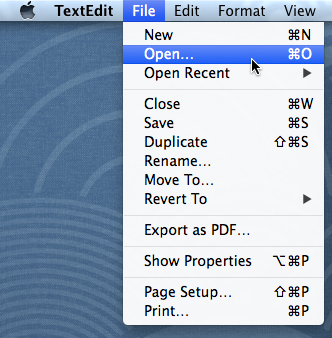
Right-clicking the mouse
Many tasks will require you to right-click with your mouse or trackpad. This usually allows you to access a menu with useful shortcuts, which will vary depending on which application you're using. In OS X, right-clicking is disabled by default, but it is easy to enable the feature.
To enable right-clicking:
- Click the Apple icon in the top-left corner of the screen, then select System Preferences.
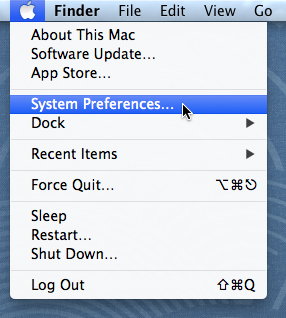
- The System Preferences will appear. Select the Mouse category.
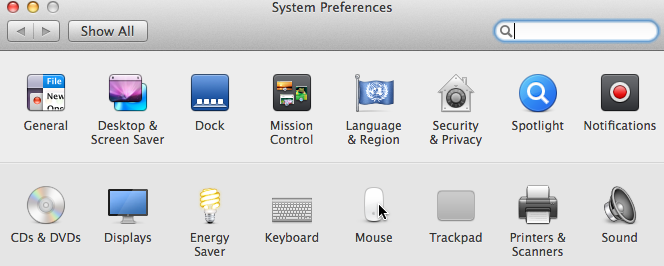
- Check the box next to Secondary click. Right-clicking will be enabled. If you are using a mouse without an obvious right button (such as the Magic Mouse shown below), you can right-click by clicking near the right side of the mouse.
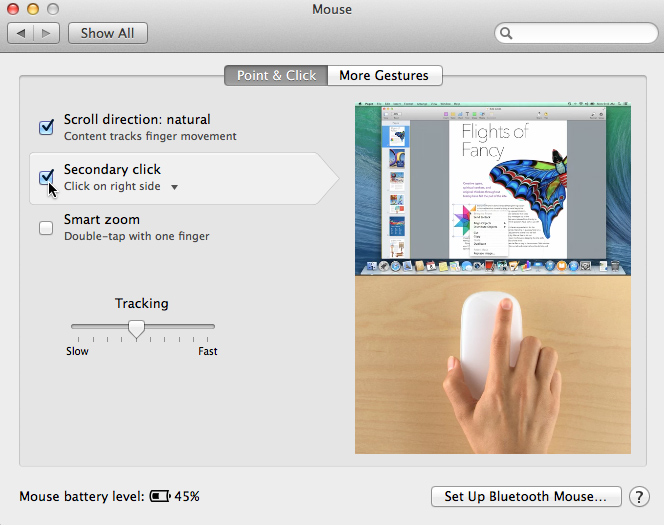
Other ways to right-click
If you don't have right-clicking enabled, you can still perform a secondary click (right-click) at any time on your Mac. Just press and hold the Control key on your keyboard and click the mouse.
If you have a trackpad, you can tap it with two fingers to right-click. You can also go to System Preferences Trackpad to choose other right-click options for the trackpad.
Trackpad to choose other right-click options for the trackpad.
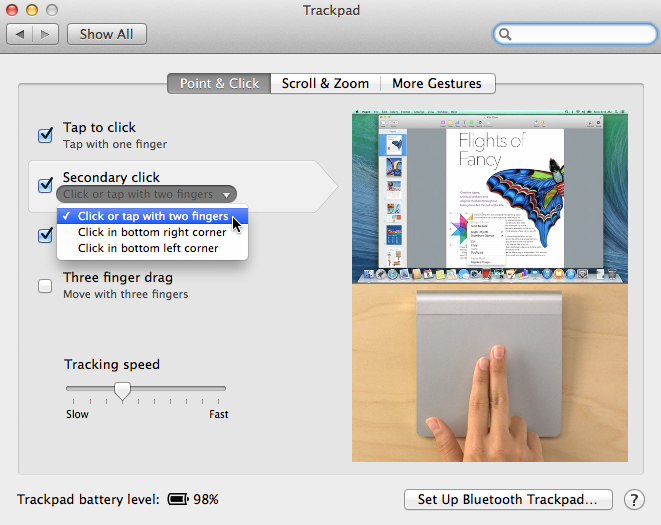
Cut, copy, and paste
Many applications allow you to copy items from one place and paste them to another. For example, if you're working with a word processor, you might copy and paste text to avoid typing the same thing over and over. If there's something you want to move from one place to another, you can cut and paste instead.
To copy and paste:
- Select the item you want to copy. In our example, we'll select a word in a document.
- Right-click the mouse and select Copy from the menu that appears. Alternatively, you can press Command+C on your keyboard.
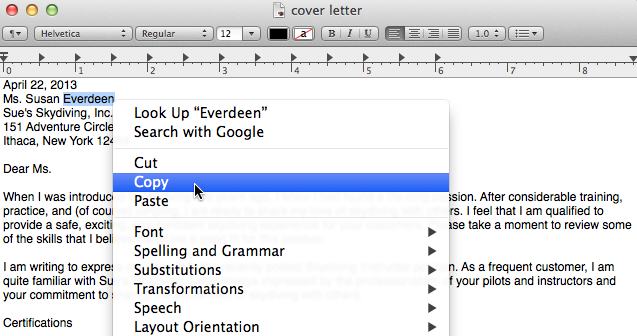
- Locate and right-click the desired location for the item, then select Paste. Alternatively, you can press Command+V on your keyboard.
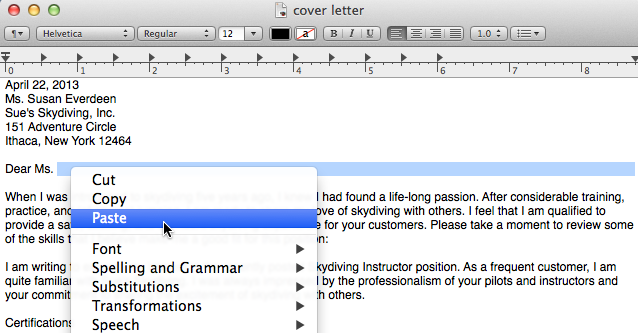
- The item will be copied to the new location. Notice how the original text that was copied has not been moved or changed.

To cut and paste:
- Select the item you want to cut. In our example, we'll select a paragraph of text in a document.
- Right-click the mouse and select Cut from the menu that appears. Alternatively, you can press Command+X on your keyboard.
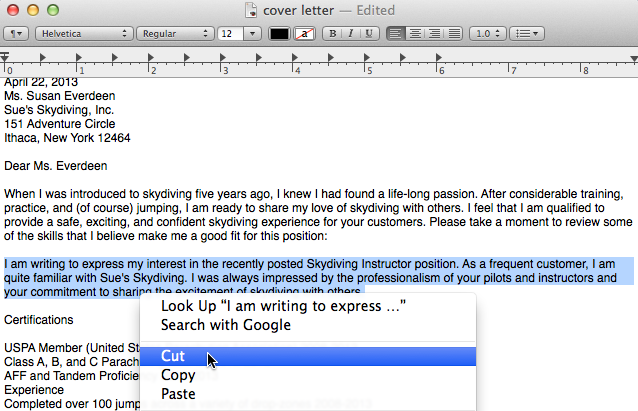
- Locate and right-click the desired location for the item, then select Paste. Alternatively, you can press Command+V on your keyboard.
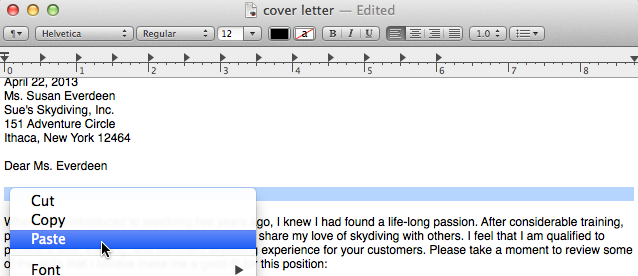
- The item will be pasted, or moved, to the new location. In our example, we used the cut and paste commands to move the second paragraph above the first paragraph.
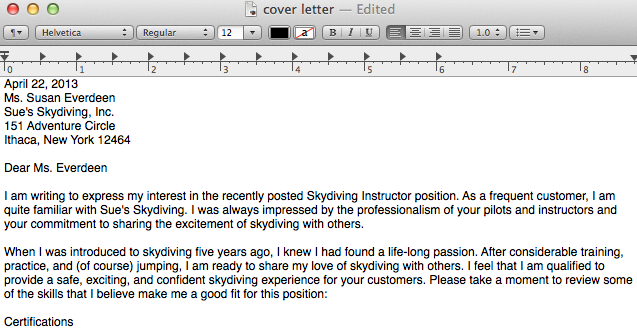
To copy and paste files:
You can use the cut, copy, and paste commands for a variety of tasks on your computer. For example, if you wanted to create a duplicate copy of a file, you could copy it from one folder to another.
- Right-click the file and select Copy from the menu that appears. Alternatively, you can press Command+C on your keyboard.
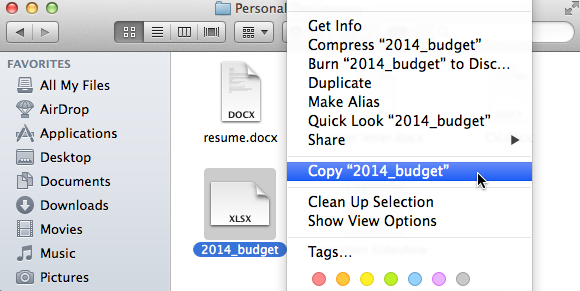
- Locate and right-click the new location and select Paste. Alternatively, you can press Command+V on your keyboard. In our example, we'll paste the file to the desktop.
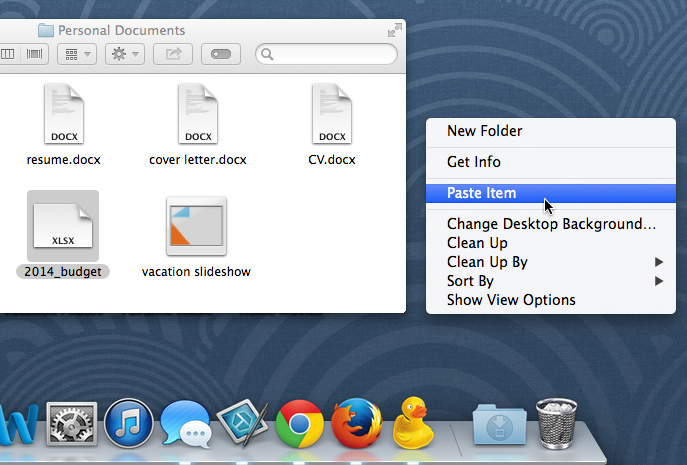
- The duplicate file will appear. Notice how the original file has not been moved or changed. Also note that if you make a change to the original file, it will not update any copies of that file.
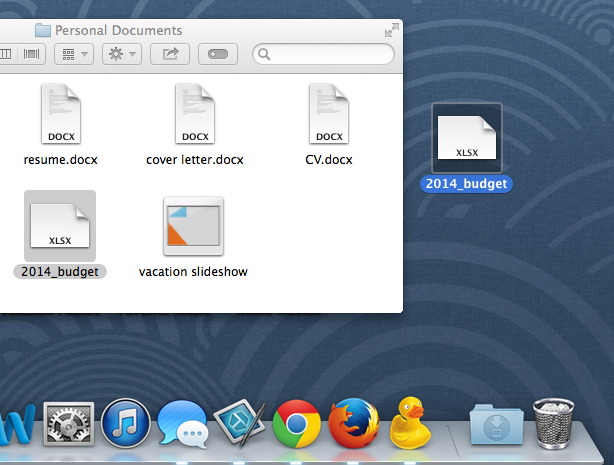
Note that copying a file is not the same as creating a shortcut. You can review our lesson on Working with Files to learn more about using shortcuts.
Undoing changes
Let's suppose you're working on a text document and accidentally delete some text. Fortunately, you won't have to retype everything you just deleted! Most applications allow you to undo your most recent action when you make a mistake like this. Just click the Edit menu in the Menu bar and select Undo. Alternatively, you can press Command+Z on your keyboard. You can continuing using this command to undo multiple changes in a row.

Note that the Undo command will work almost all of the time, but not in every situation. For example, if you empty the Trash to permanently delete a file, you can't undo the action.
Now you know some of the most commonly used commands, which you'll be able to use in almost any application on your computer. As we mentioned earlier in this lesson, you can also use keyboard shortcuts to perform these commands even faster. We'll talk more about keyboard shortcuts in our lesson on Keyboard Shortcuts in OS X.


